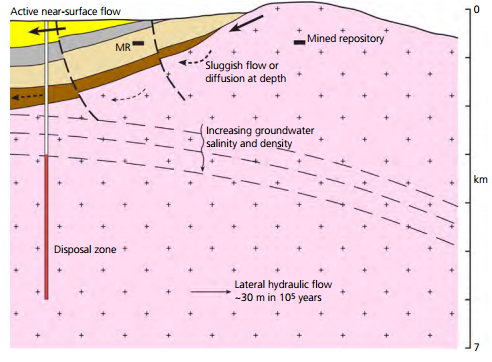Nuclear waste – ‘deep borehole’ or ‘geological repository’ disposal
Waste and clean-up 3 December 2015
This month I asked ‘What impact has nuclear waste had (or will have) on the environment?’
While the accidental release of radionuclides into the environment would certainly be a bad thing, numerous safeguards make this quite improbable. In fact the vast majority of the effect that nuclear waste has on the environment comes instead from the engineering projects designed to store it: that is, mining and construction operations.
The current international standard for the disposal of nuclear waste is that of the ‘deep geological repository’ (GDF), an engineered store, hundreds of meters underground, into which the nuclear waste is placed for the millions of years required for its decay into safe isotopes. In some cases, such as Schacht Asse in Germany, these facilities are former mines and as such there is much less additional excavation of rock to add to the environmental footprint, compared to building a brand new repository. However, even if a geological repository is constructed from scratch, as was the US store in New Mexico, by virtue of it being underground the predominant environmental impact will arise from how the mine tailings are accounted for. What to do with these mine tailings, is a problem no different to that faced by all of the thousands of regular mining operations, currently taking place around the world.
As an alternative, in the future nuclear waste disposal could altogether abandon the requirement for fully excavated repositories. One of the projects my group is working on is ‘deep borehole disposal’, whereby instead of digging out what is effectively a big underground warehouse for the wastes, you drill 5 km vertical shafts down into the ground and stack the nuclear waste barrels at the bottom of each of these shafts. Although 5 km is much deeper than conventional mines, the nuclear waste barrels would actually sit below the water table and therefore, we think, it is effectively impossible for radioisotopes to leak back up to the biosphere from this depth. Therefore deep borehole disposal might be a less harmful environmental option compared to the currently planned geological disposal repositories, not only in terms of their long term protection against nuclear waste leakage, but also the environmental cost of their construction.

Dr James Miller works as a Knowledge Transfer Associate for a major national laboratory. The views here are entirely his own.



Leave a Reply